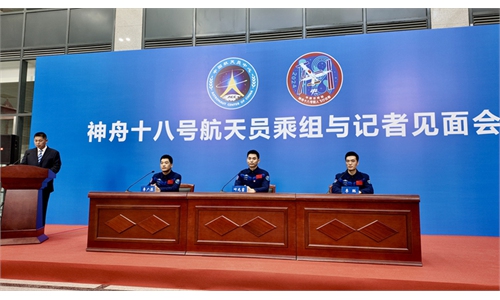Shenzhou-20 mission to conduct experiment on planarian regeneration from head, middle and tail segments

Photo: CCTV
As China's first space experiment involving planarians, the Shenzhou-20 mission will study the effects of space on planarian regeneration using head, middle and tail segments, with potential applications in addressing space-related health issues and aging on Earth, Cang Huaixing, professor at the Technology and Engineering Center for Space Utilization under the Chinese Academy of Sciences, told the Global Times on Wednesday.
Three research subjects, zebrafish, planarians and streptomyces, will be used in a set of life science experiments in China's space station during the Shenzhou-20 crewed spaceflight mission, as the regeneration experiment of planarian in space is the first of its kind in China.
China is set to launch the Shenzhou-20 crewed spacecraft at 5:17 pm on Thursday (Beijing Time) from the Jiuquan Satellite Launch Center in Northwest China, Lin Xiqiang, a spokesperson of the China Manned Space Agency (CMSA), announced on Wednesday at a press briefing.
Planarians are ancient flatworms known for their extraordinary abilities to regenerate and repair, and they are key model organisms in biological researches, Cang told the Global Times on Wednesday.
When bisected , each piece of planarians can regenerate muscles, skin, intestines, and even a complete brain. Studying planarians provides valuable insights into how human cells might overcome aging and delay degeneration, Cang said.
The mission will study the effects of space on planarian regeneration using head, middle, and tail segments, with a focus on microgravity and radiation effects factors. The research aims to uncover the fundamental mechanisms of regeneration at individual and molecular levels, with potential applications in addressing space-related health issues and aging on Earth, Cang explained.
Additionally, a project involving six adult male zebrafish will be conducted over a 30-day period, Cang added.
Cang noted that the microgravity environment in space can lead to arrhythmia and cardiac remodeling in the human cardiovascular system, as well as continuous bone losses in the skeletal system, significantly increasing the risk of fractures. These issues present major challenges to long-term human survival in space.
By studying the effects of microgravity on protein homeostasis in vertebrates, the research aims to clarify how protein homeostasis regulates bone mass loss and cardiovascular dysfunction caused by microgravity, and to explore protective strategies for long-term human space missions in the future.
Streptomyces are widely distributed in the Earth's natural environment, plants and animals, and humans, playing an important role in soil improvement, plant promotion and resistance, and ecosystem construction and maintenance.
Cang stated that the experiment will study the growth, differentiation, bioactive compound production and population succession of streptomyces in microgravity, providing theoretical support for extraterrestrial ecosystems such as those on Mars. It also aims to study the expression patterns of microbial active substances and enzymes with important application value in the space environment, and to lay the foundation for the development of microbial application technologies and products using space environment resources.
Noting that previous experiments with zebrafish and fruit flies in space were highly successful, Lin said that the Shenzhou-20 mission will further experiment based on the zebrafish-hornwort co-cultivation ecosystem established during the Shenzhou-18 mission.



